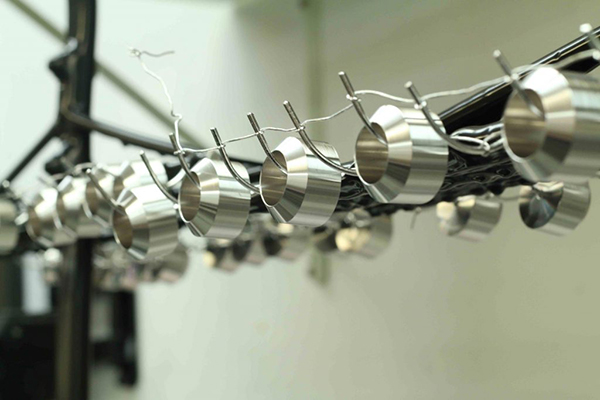RHODIUM PLATING SERVICES

Rhodiumis a silvery-white, hard, and chemically inert precious metal, which means that it does not oxidize. It is one of the Platinum group of metals, including Rhodium, Ruthenium, Iridium, Platinum, Osmium, and Palladium, which all share some common physical properties.. These six metals are very dense, have high melting points, are very resistant to corrosion. Rhodium is extremely durable with a Vickers Hardness of 1246 MPa. It is resistant to corrosion, tarnish, and scratches, with a boiling point of 3727°C and a melting point of 1966°C.
With Rhodium being inert against corrosion and most aggressive chemicals, other applications include sliding electrical contacts to protect them from galling or sliding contact wear and high voltage/high amperage electrical contacts where there is a potential for oxide formations on the contact surface. Rhodium has a much whiter appearance than Palladium and Platinum.
For your Rhodium Plating requirements, ProPlate® has capabilities for Rhodium electroplating both small and large parts in various sized barrels and racks, along with custom and prototype metal finishing.
Specifications
MIL-R-46085, ASTM B634, AMS 2413
ASTM B634 – 88 (Reapproved 1999) Standard Specification for Electrodeposited Coatings of Rhodium for Engineering Use and MIL-R-46085 Rhodium Plating, Electrodeposited are relevant specifications for covering the requirements of the electrodeposition of Rhodium over metallic surfaces.
There are two recommendations for specifying the use of Rhodium for Rhodium electroplating:
- As Rhodium is a very dense metal, when it is used for electroplating, the thickness of the Rhodium coating should be as thin as possible. Coatings of electroplated Rhodium develop a very dense crystal structure which is also highly fractured, contributing to the hardness and durability of the Rhodium coating. However, the thicker the coating, the more likely that the Rhodium might break and flake away from the surface which it is coating. Good manufacturing practices dictate that a Rhodium electrodeposit of up to 100 micro inches or 2.5 micros which is also 0.000100 inches is regularly maintained. In addition, during the electroplating process, there should be no impurities in the Rhodium bath and it should be monitored for maintaining the right amount of organic compounds for stress reduction.
- Good manufacturing practices also dictate that a thin layer of Gold be applied under all Rhodium plating and be included in the plating specification, even though typical specifications for Rhodium plating require an undercoat of Nickel for performance purposes. However, by using Gold under the Rhodium electroplating in a proper bath, the result will be a dependable, stress free electrodeposit.